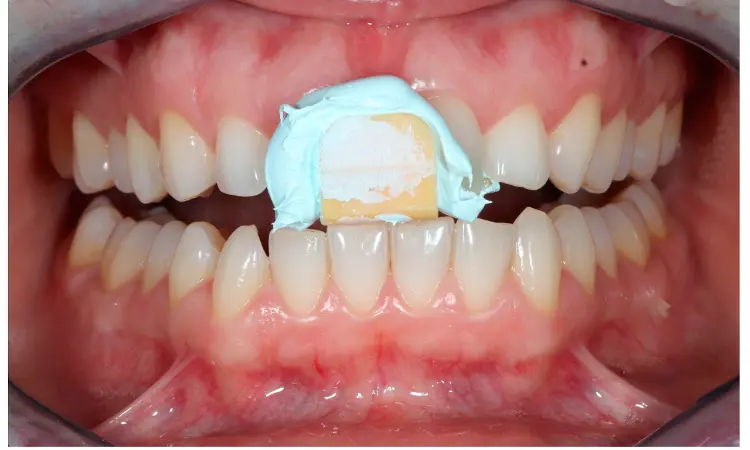- Home
- Medical news & Guidelines
- Anesthesiology
- Cardiology and CTVS
- Critical Care
- Dentistry
- Dermatology
- Diabetes and Endocrinology
- ENT
- Gastroenterology
- Medicine
- Nephrology
- Neurology
- Obstretics-Gynaecology
- Oncology
- Ophthalmology
- Orthopaedics
- Pediatrics-Neonatology
- Psychiatry
- Pulmonology
- Radiology
- Surgery
- Urology
- Laboratory Medicine
- Diet
- Nursing
- Paramedical
- Physiotherapy
- Health news
- Fact Check
- Bone Health Fact Check
- Brain Health Fact Check
- Cancer Related Fact Check
- Child Care Fact Check
- Dental and oral health fact check
- Diabetes and metabolic health fact check
- Diet and Nutrition Fact Check
- Eye and ENT Care Fact Check
- Fitness fact check
- Gut health fact check
- Heart health fact check
- Kidney health fact check
- Medical education fact check
- Men's health fact check
- Respiratory fact check
- Skin and hair care fact check
- Vaccine and Immunization fact check
- Women's health fact check
- AYUSH
- State News
- Andaman and Nicobar Islands
- Andhra Pradesh
- Arunachal Pradesh
- Assam
- Bihar
- Chandigarh
- Chattisgarh
- Dadra and Nagar Haveli
- Daman and Diu
- Delhi
- Goa
- Gujarat
- Haryana
- Himachal Pradesh
- Jammu & Kashmir
- Jharkhand
- Karnataka
- Kerala
- Ladakh
- Lakshadweep
- Madhya Pradesh
- Maharashtra
- Manipur
- Meghalaya
- Mizoram
- Nagaland
- Odisha
- Puducherry
- Punjab
- Rajasthan
- Sikkim
- Tamil Nadu
- Telangana
- Tripura
- Uttar Pradesh
- Uttrakhand
- West Bengal
- Medical Education
- Industry
Occlusal devices fabricated using fully digital workflow have better occlusal adjustment versus those fabricated using an analog workflow

Occlusal devices fabricated using a fully digital workflow have better occlusal adjustment versus those fabricated using an analogue workflow suggests a new study published in the Journal of Esthetic and Restorative Dentistry
Study was done to evaluate the volumetric changes on occlusal surface of computer-aided design and computer-aided manufacturing (CAD-CAM) occlusal devices fabricated following a fully digital workflow after occlusal adjustment, compared to those fabricated with an analog workflow.
Eight participants were included in this clinical pilot study, receiving two different occlusal devices fabricated with two different workflows, fully analog and fully digital. Every occlusal device was scanned before and after the occlusal adjustments to compare the volumetric changes using a reverse engineering software program. Moreover, three independent evaluators assessed a semi-quantitative and qualitative comparison using visual analog scale and dichotomous evaluation. The Shapiro–Wilk test was performed to validate normal distribution assumption, and a dependent t-Student test for paired variables was used to determine statistically significant differences (p-value < 0.05).
Results
The root mean square value was extracted from the 3-Dimensional (3D) analysis of the occlusal devices. The average values of the root mean square were higher for the analogic technique (0.23 ± 0.10 mm) than the digital technique (0.14 ± 0.07 mm) but the differences were not statistically significant (paired t-Student test; p = 0.106) between the two fabrication techniques. The semiquantitative visual analog scale values between the impression for the digital (5.08 ± 2.4 cm) and analog (3.80 ± 3.3 cm) technique were significant (p < 0.001), and statistically significant differences values were assessed for evaluator 3 compared to the other evaluators (p < 0.05). However, the three evaluators agreed on the qualitative dichotomous evaluation in 62% of the cases, and at least two evaluators agreed in 100% of the evaluations.
Occlusal devices fabricated following a fully digital workflow resulted in fewer occlusal adjustments, as they could be a valid alternative to those fabricated following an analog workflow. Fabricated occlusal devices following a fully digital workflow could have some advantages over analog workflow such reduce occlusal adjustments at delivery appointment, which can result in reduced chair time and therefore increased comfort for the patient and clinician.
Reference:
Blasi, A, Henarejos-Domingo, V, Palacios-Bañuelos, R, Vidal-Ponsoda, C, Aparicio, C, Roig, M. CAD-CAM and analog occlusal splints comparison based on the number of occlusal adjustments. 3D analysis of the volumetric changes: A pilot study. J Esthet Restor Dent. 2023; 1-8. doi:10.1111/jerd.13080
Keywords:
Occlusal, devices, fabricated, using, fully, digital, workflow, better, occlusal, adjustment, versus, fabricated, using, analogue, workflow, Blasi, A, Henarejos-Domingo, V, Palacios-Bañuelos, R, Vidal-Ponsoda, C, Aparicio, C, Roig, M. CAD-CAM, Journal of Esthetic and Restorative Dentistry
Dr. Shravani Dali has completed her BDS from Pravara institute of medical sciences, loni. Following which she extensively worked in the healthcare sector for 2+ years. She has been actively involved in writing blogs in field of health and wellness. Currently she is pursuing her Masters of public health-health administration from Tata institute of social sciences. She can be contacted at editorial@medicaldialogues.in.
Dr Kamal Kant Kohli-MBBS, DTCD- a chest specialist with more than 30 years of practice and a flair for writing clinical articles, Dr Kamal Kant Kohli joined Medical Dialogues as a Chief Editor of Medical News. Besides writing articles, as an editor, he proofreads and verifies all the medical content published on Medical Dialogues including those coming from journals, studies,medical conferences,guidelines etc. Email: drkohli@medicaldialogues.in. Contact no. 011-43720751


